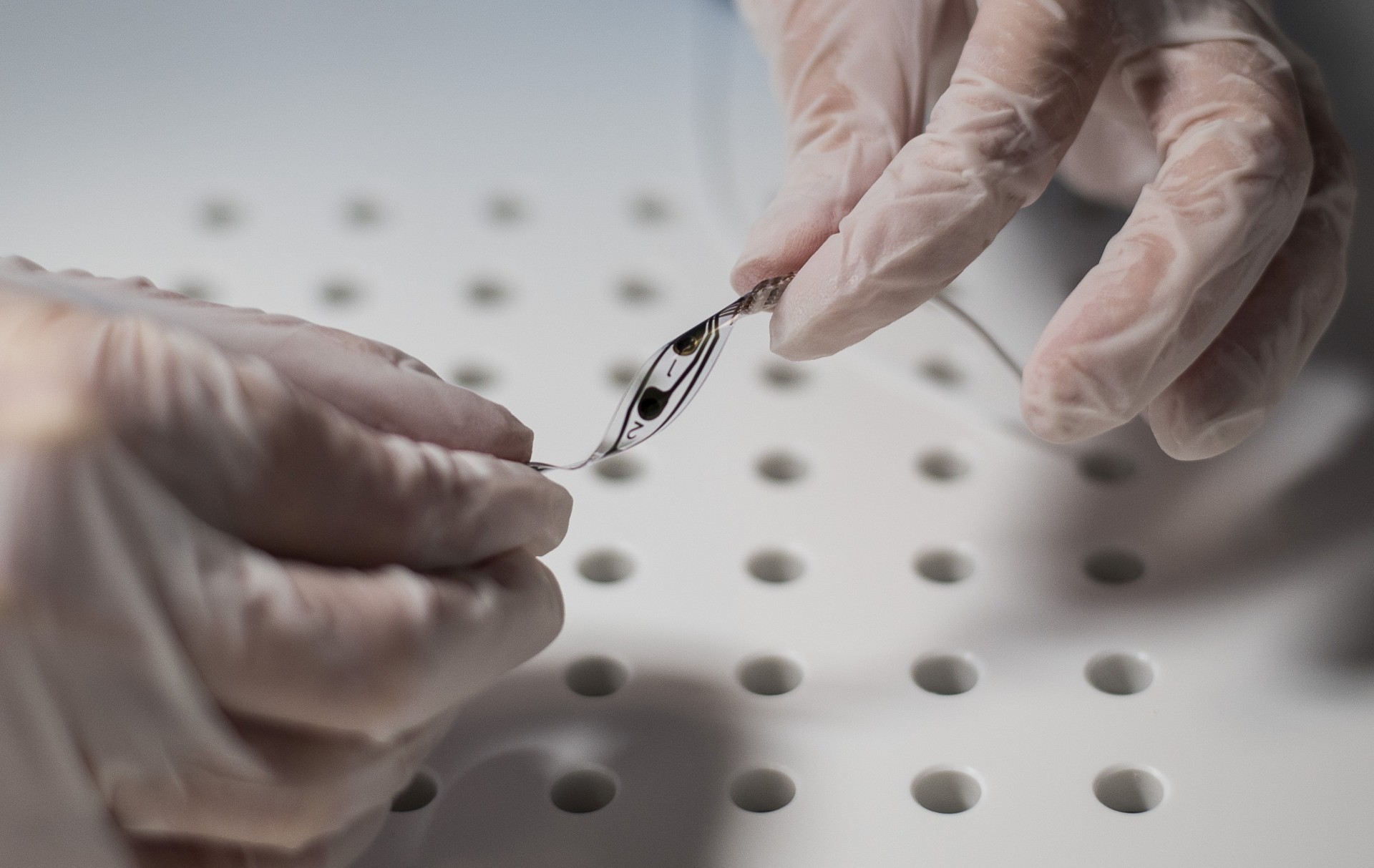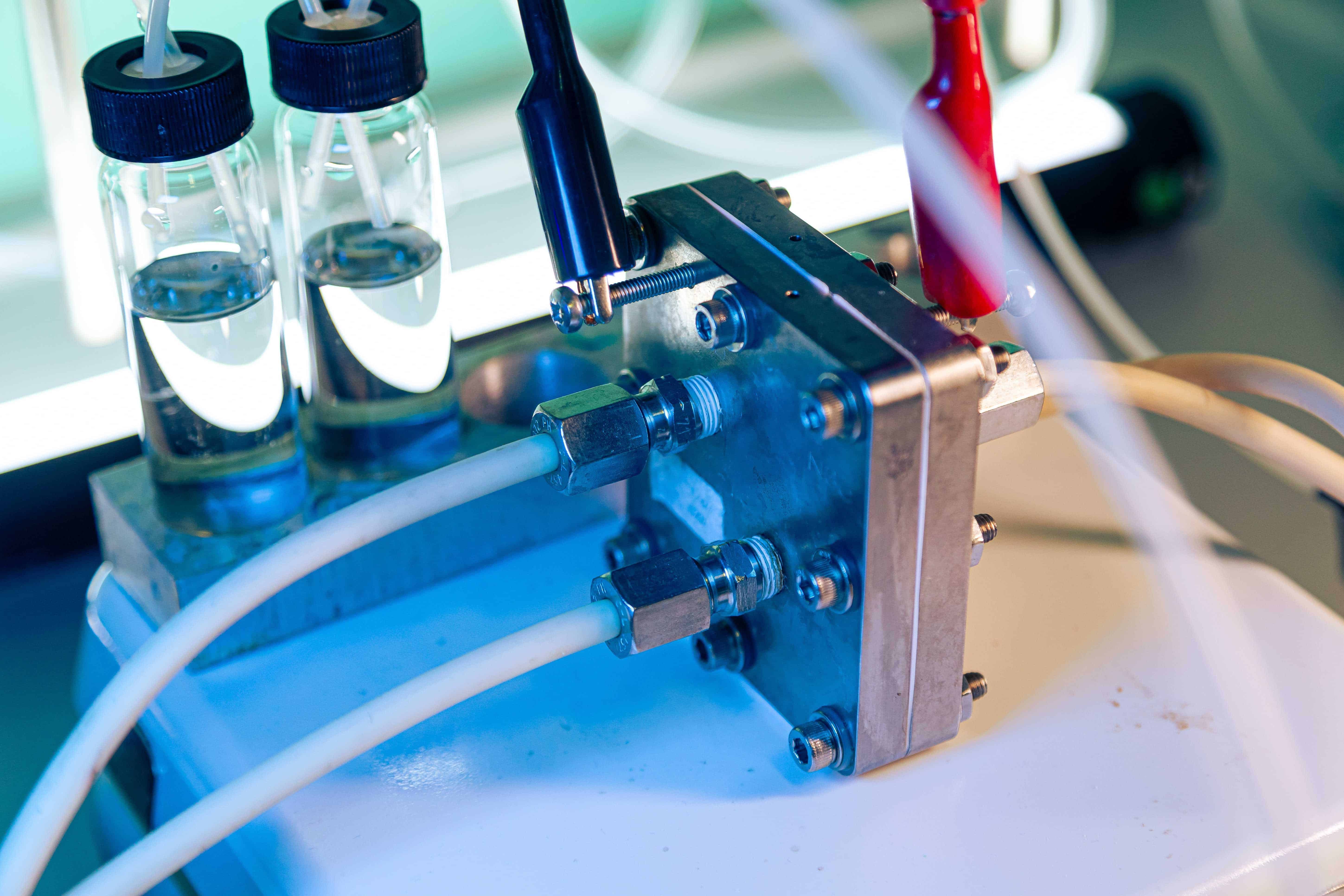
Brain surgeries are complicated ventures. In order to remove a tumor and not compromise any other organs during surgery, processes are guided by ‘neuromonitoring‘ (also called electrophysiological monitoring). This is where neuroelectrodes monitor the functional integrity of the brain.
Brains are like a pudding, and nerves are like strings of cooked spaghetti
The electrodes are made of hard materials, primarily metal, which is not ideal in areas where there are soft tissues. “Brains are like a pudding, nerves are like strings of cooked spaghetti,” says Luca Ravagnan, a physicist specializing in nanotechnology. He is CEO and one of the founders of Wise. This is a company that has developed a patented neuroelectrode made out of a flexible biocompatible silicone material.
First flexible neuroelectrode
The technique involves embedding metallic nanoparticles in a preformed polymer base. The electrodes generated by this technique bind firmly to the polymer. They are resistant to deformation, such as bending and stretching. According to Ravagnans, it is the first implantable electrode in the world that is made of soft material. Its advantages are that it is less invasive and models itself more closely on the tissue.

The Wise Cortical Strip, as the electrode strip is called, has successfully passed the clinical testing phases. Currently, it is undergoing regulatory scrutiny in order to be granted the European Quality Mark (CE). Ravagnan expects this to be issued in 2021. Production can then get underway after that. Some of which will be done in-house at Wise’s own complex under the skies of Milan.
Wise Neuro’s flexible and ultra-tiny implantable electrodes are also being tested now for insertion into the spinal cords of patients with chronic pain. Implanting electrodes to alleviate pain is nothing new. Although this is only performed occasionally, partly due to the need for a lengthy operation under an anesthetic, which sometimes involves the removal of bone.
Neuroelectrodes from Musk
By contrast, Italian technology makes it possible to make softer electrodes, similar to very thin strips of silicone. As such, these can be rolled up and are so small that they can be implanted into the spinal cord with the help of a needle. This form of implantation is not unknown, but the implants currently in use are rigid and linear. What is known as percutaneous insertion does not require invasive surgery under general anesthesia. Clinical trials of this pain relief product will start in 2022 and hopefully, be approved in 2023 for Wise to enter the (financially interesting) market.
The name contains the word ‘Euro’, or Europe, and the company is embedded in a solid European environment.
The name (Wise Neuro) obviously contains the word ‘Euro’, or Europe, whether intended or not, and the company is as such also embedded in a solid European environment. In recent years, the company has been financed with 26 million euros from Italian, German, and Swiss venture capitalists. These include the prominent German semi-private investment fund High-Tech Gründerfonds. The European Union has also invested two million euros in Wise.
That is peanuts compared to, for example, Neuralink, the American company in neurotechnology that Elon Musk (Tesla’s) founded only four years ago and which has already mustered more than 150 million dollars. Nevertheless, Musk’s company has not been able to unveil a single concrete product so far.
Even virtual reality can help with chronic pain management.








